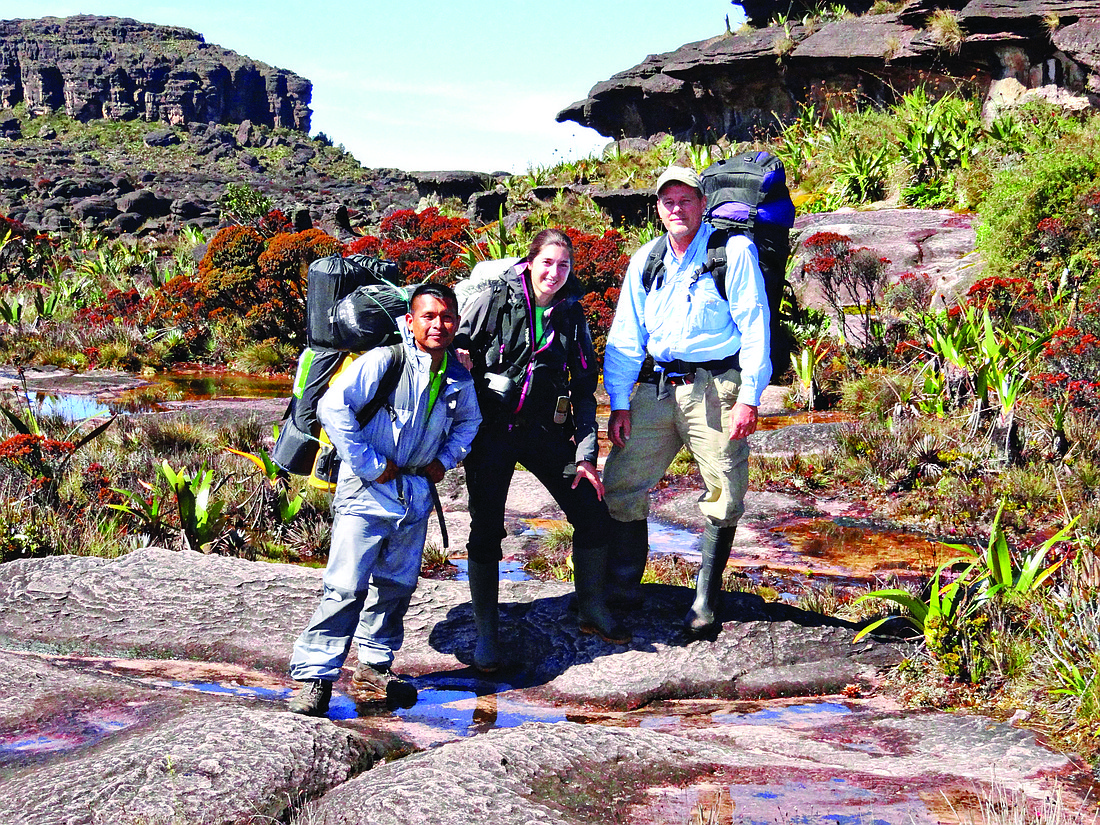- April 18, 2024
-
-
Loading

Loading

It’s easy to admire the beauty growing in Marie Selby Botanical Gardens. But what visitors don’t see is some of the behind-the-scenes work that has not only helped shape the present and future of the garden but also preserved the history of the plants.
Since the garden’s inception in 1973, Selby’s botany department has conducted 200 international expeditions, mostly to new-world tropical areas in Central and South americas — where plant diversity is said to be the highest in the world — to study and collect plants. The fieldwork contributes to the department’s botanical inventory, plant classification and conservation. With a main focus on epiphytes, or plants that grow upon other plants, Selby’s botanists have, to date, discovered and described about 2,000 new species to science.
“Inventory is a basic sort of work, but it provides the baseline for conservation,” says Bruce Holst, Selby’s director of botany. “Knowing what you have in a certain area allows you to manage that.”
While on expedition, the botanists collect specimens of plants growing throughout a region or designated location. But not all of the fieldwork is far from home. Botanists also conduct inventory locally and receive specimens from other gardens and botanists throughout the world.
And, not all of Selby’s plant collection is alive.Holst and his staff of three full-time employees, three off-site research assistants and 50 volunteers also preserve plants to add to a library hosted on the garden’s premises. The library of plants, or herbarium, currently contains 108,000 plant specimens.
“The value is that, in the herbarium, there might be 40,000 species represented in our collection, whereas in the living collection we have about 5,000 species,” says Holst.
The plants are dried, pressed and mounted on paper, or they are pickled in alcohol for 3-D preservation in the aptly named “spirit collection.” Every specimen in the herbarium is intended to last for centuries.
The oldest plant in the collection, the Bonamia grandiflora, dates back to 1878. Until its habitat was demolished to make way for urban development, it could be found growing in scrub habitats in Sarasota County. Now, the closest natural population is in northeastern Manatee County — the government considers the species threatened.
According to Holst, Selby’s herbarium is small in comparison with others around the world, but the highly specialized collection and the other work his department conducts is critical in meeting the ultimate goal of botany — to conserve life on Earth and to protect and enhance biodiversity.
“I encourage people to go out and see plants in their native habitat,” says Holst. “There are plants almost anywhere in the world you go — even in the cracks of the sidewalk.”
Prime Specimens
Each week, 50 volunteers assist the botany department with tasks in the herbarium, spirit collection, library, live plant records/photography and Florida botany projects. Although the volunteers are mostly trained on the job, many already possess an attention to detail and familiarity with botanical nomenclature. It takes a plant mounter six months to learn the job and become familiar with the wide variety of specimens. Every Wednesday, two groups of volunteers use special glue to mount dried flowers to museum-quality paper to be stored in the herbarium. The morning group calls themselves the “Merry Mounters,” while the afternoon group call themselves the “Prime Specimens.”
The herbarium is not open to the public, but the education department provides group tours. Call
366-5731, Ext. 237.
Contact Randi Donahue at [email protected]